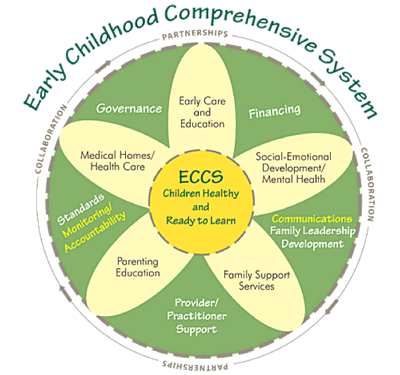Lesson 11: Site Comparison
Attention

Learning Outcomes
Upon completion of this lesson's material, students will be able
- Explain varying differences among early childhood programs including: theory, curriculum, assessment, environments, schedules, interactions, supports, community involvement and family involvement.
Teaching
Great theorists have afforded programs with their deep knowledge and beliefs about how young children grow and develop. Not all programs operate from a theorist’s belief but do hold individual philosophies. For example,
- High/Scope and Reggio Emilia theory is based on Piaget, constructivism, Dewey and Vygotsky.
- Montessori is based on the philosophy and beliefs of Maria Montessori
- Waldorf theoretical basis is the philosophy and beliefs of Rudolf Steiner
- Head Start does not follow a theorist in particular but complies with several comprehensive standards set by federal and state regulations and uses creative curriculum.
- Family Childcare programs also do not follow a particular theorist. However, quality family childcares do follow state and federal regulations.
- Charter schools are now all of the rage and more districts are following this design. It is essentially the same as a public school but is run independently and allows the teachers to design their curriculum as they wish.
No matter how different the belief of the program, one thing remains the same. Early childhood success is not easy. It is a comprehensive system that requires different facets of support. From family childcares to charter schools have systems in place to assure developmental success for each child.
Within the site itself, there are then educators who hold their own system of beliefs and practices. You will notice some of the philosophy by the way the room is set up, what kind of materials are laid out, how the day is scheduled and by child discipline techniques. By now I would hope that you have a good handle on how your practicum site operates and what the general philosophy is. For this lesson you will be comparing and contrasting what other sites look like in comparison to where you have been spending the majority of your time.
Assessment
Lesson 11 Quiz
Visit another setting that serves children the same ages as in your placement (contact your instructor with your choice from the list provided). The site cannot be similar to yours. For example, if you are in a head start program than you cannot visit another head start program. Document ten similarities and differences.
create a copy of this Site Comparison Grid to gather information and submit it to me through the drop box.
You may have to interview staff for some of the questions. Each aspect of the comparison will be graded using the following rubric (you are going to complete a total of ten comparisons between two sites).
0 Points Did not provide any answer |
4 Points Very little detail in the description of how they are alike and different |
7 Points Some detail in the description of how they are alike and different |
10 Points Clear detail description of how they are alike and different |
Possible Class Discussion
Did anything in your site comparison surprise you and how? What was the biggest difference that you noticed?